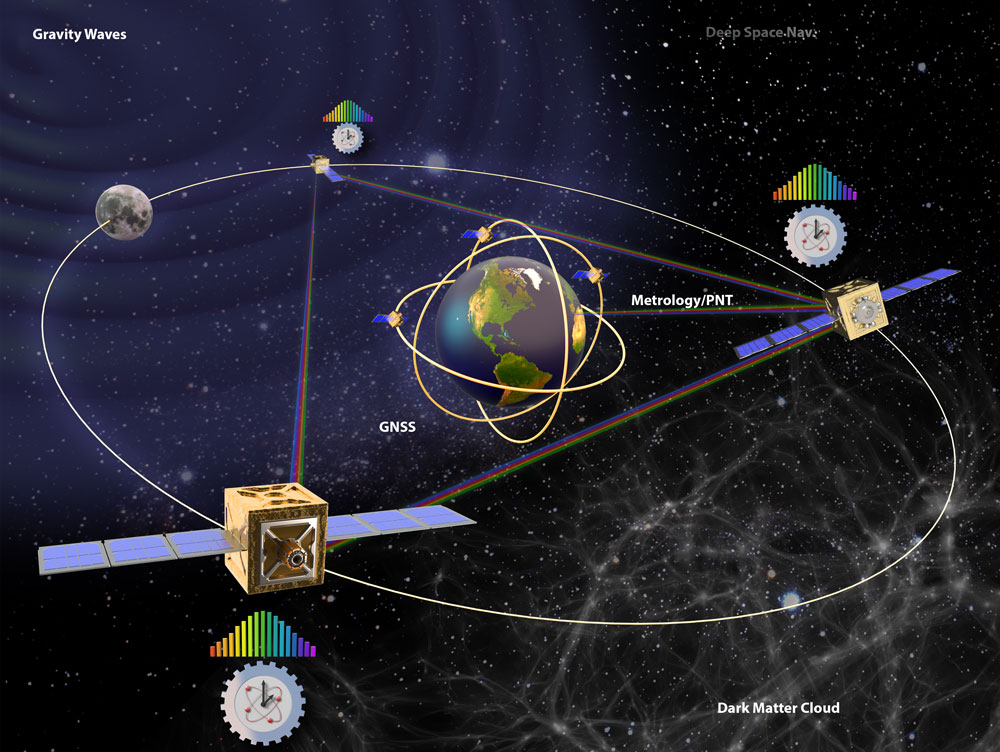Optical Frequency Combs for Space Applications
Workshop Image Gallery
The KISS images below are public domain, but must be accompanied by the appropriate image credit.
Figure 4. Optical frequency combs function as a clockwork between the radio and optical frequency domains; they can both upconvert radio frequencies into a multitude of uniformly spaced, phase coherent optical frequencies, or equivalently, divide an optical frequency down to a radio frequency where it can be processed with high speed electronics. A frequency comb can be referenced to an optical atomic transition, thereby providing the ticks of an extremely precise clock.
Image credit: Keck Institute for Space Studies / Chuck Carter.






